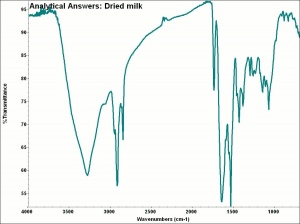Milk
Description
A nutritional white liquid produced by female mammary glands to feed newborn mammals. Milk from domesticated animals (cows, goats, sheep) has been used as a human food source, either directly or as processed into butter and cheese. Milk is essentially an emulsion of Fat (4%) and Protein (3%) in water, along with dissolved sugar (Lactose), minerals (Calcium, Phosphorus), and vitamins (B, C and D). In the production of art, milk and milk products have been used as fixatives (for pencil, chalk and pastel drawings) and as adhesives. Milk casein also act a binder in Milk paint that is generally made from milk, lime, and pigments added for color. The paint adheres best to porous substrates such as wood, its common traditional use, but will adhere also and with greater sheen to non-porous ones
Physical and Chemical Properties
- pH = 6.7 - 6.9
Resources and Citations
- Wikipedia: Milk
- Eric Hebborn, ‘The Art Forger’s Handbook’ The Overlook Press,Woodstock, NY 1997.
